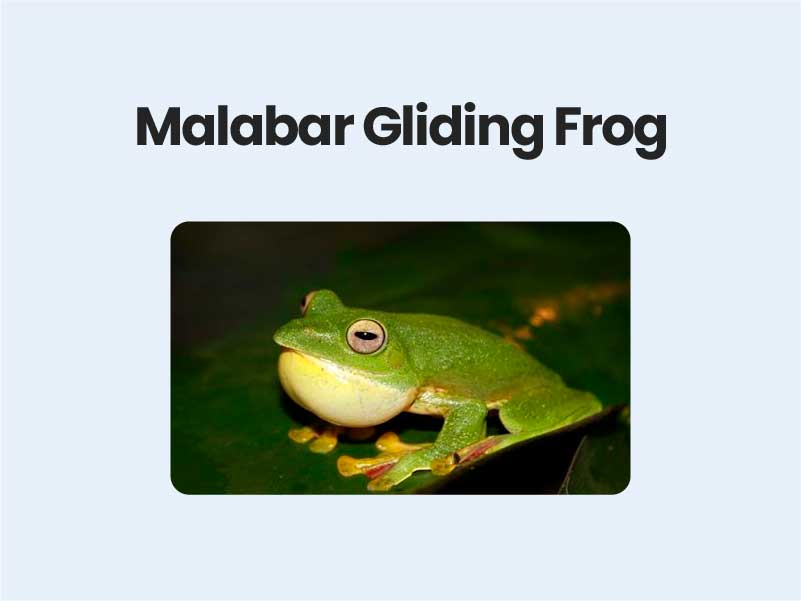Companion@360 → 7 Month programme to sharpen your writing skills → REGISTER NOW

Malabar Gliding Frog
Malabar Gliding Frog- A green frog with a slender body, webbed feet, unusual body positions, very well camouaged and gliding in the air. This was how a juvenile Malabar gliding frog (Rhacophorus malabaricus), a rare amphibian that can glide in the air up to 10-12 m, was spotted in the orchard of a house at Pullad, near Kozhencherry in Kerala.
- The frog endemic to the rain forests of the Western Ghats in his orchard, it was the second time he spotted this rare species in the orchard in the past two years.
- Their gliding abilities help these frogs cover 10-12 ft in one leap.
- The frog has got a body length of 10 cm, making it one of the largest mossy frogs. The ngers and toes are like sticks to attach to and walk through tree branches. Males are smaller than females.
- In the International Union for Conservation of Nature (IUCN) Red List , it is placed in the Least Concern category.
- The Malabar gliding frog population is declining due to deforestation, climate change, developmental activities, and toxic chemicals.
- They built foam nests above small pools of water, into which the tadpoles drop after hatching.
- These frogs have the skin which is green in colour and resembles moss growing on the rock.
- The breeding period is during the monsoon and usually, the females choose to spawn on the lush green leaves overhanging a waterbody.
Western ghats:
- Older than the Himalaya mountains, the mountain chain of the Western Ghats represents geomorphic features of immense importance with unique biophysical and ecological processes.
- The site’s high montane forest ecosystems influence the Indian monsoon weather pattern. Moderating the tropical climate of the region, the site presents one of the best examples of the monsoon system on the planet.
- It also has an exceptionally high level of biological diversity and endemism and is recognized as one of the world’s eight ‘hottest hotspots’ of biological diversity.
- The forests of the site include some of the best representatives of non-equatorial tropical evergreen forests anywhere and are home to at least 325 globally threatened flora, fauna, bird, amphibian, reptile and fish species.
- At least 325 globally threatened (IUCN Red Data List) species occur in the Western Ghats.
- The globally threatened flora and fauna in the Western Ghats are represented by 229 plant species, 31 mammal species, 15 bird species, 43 amphibian species, 5 reptile species, and 1 fish species.
- Of the total 325 globally threatened species in the Western Ghats, 129 are classified as Vulnerable, 145 as Endangered and 51 as Critically Endangered.
- Gujarat, Maharashtra, Goa, Karnataka, Tamil Nadu, and Kerala are the six Indian states covered by the Western Ghats.
View this post on Instagram
